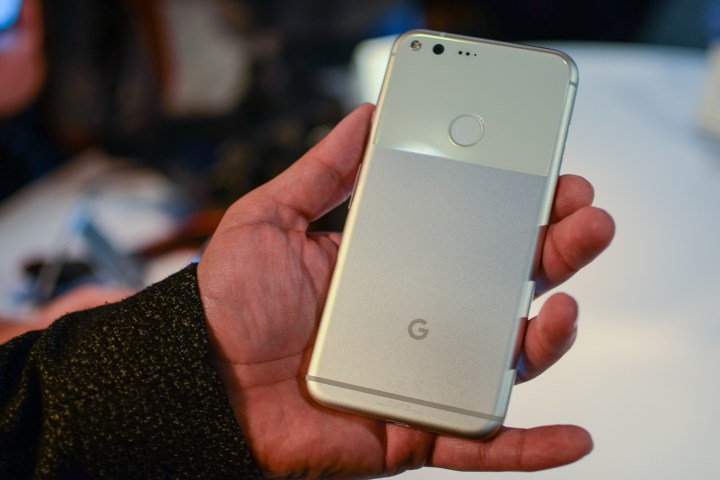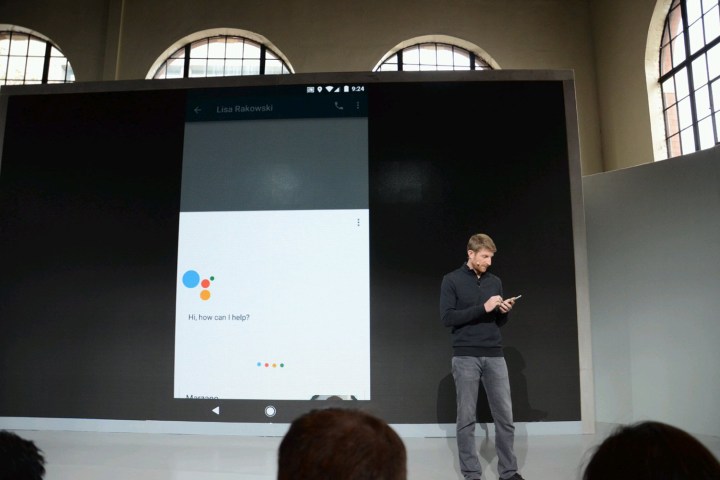
This is a major strategy shift for Google, and one that is long overdue. By taking end-to-end control of software and hardware, Google can elevate Android to the next level, addressing its major shortcomings. It’s a move that shows a willingness to stand toe-to-toe against Apple and shrug off any lingering deference to dominant Android partners like Samsung.
How did we get here?
When Google started the Open Handset Alliance it was reliant on hardware partners like HTC, LG, Motorola, Samsung, and Sony. It was only through them that Google could position itself on the majority of the world’s smartphones. The Nexus line was never a serious attempt to muscle in on the market. It grew out of a desire to produce a reference device for developers to test on.
Google never took full ownership of Nexus phones in the way it is now with the Pixel phones.
The marketing muscle and cutting-edge technology that really drove Android adoption came from Google’s partners. All of them had been caught flat-footed by Apple’s iPhone and Google stepped into the software void and allowed them to compete again. It has largely been a mutually beneficial arrangement, but over time, the line between the open ideals of the platform at its conception and Google’s stewardship have grown increasingly blurred.
Google has found itself walking a tightrope; trying to persuade partners to follow its advice, but unable to really bare its teeth for fear of them abandoning the platform. For years it looked as though gaining a foothold on devices through the software might be enough for Google, but stepping into hardware is the only way that the company can realize its vision for Android. To fully understand this move we have to consider the platform’s weaknesses.
The problems with Android
In the early days of Android its competitors bemoaned the complexity of the platform. It lacked the elegant simplicity and accessibility of iOS. Google worked hard to catch up and possibly even surpass its rival. In truth, the two platforms have far more in common today than features that divide them, but the idea that
It’s an idea that has been reinforced by fragmentation — the Achilles heel of Android.

There is no standardized Android experience because there are so many different versions of the platform out there on so many different handsets. Google never dictated hardware rules and that helped
Manufacturers desperate to differentiate themselves from the Android competition layered their own software on top of
As the underlying operating system has improved, these manufacturer UIs have grown increasingly superfluous, but what’s worse is that they’ve effectively blocked Google from rolling out important Android security updates when it wants to. There’s a multitude of hardware and software combinations, so updates have to pass through countless manufacturer and carrier hoops before they can reach our phones.
This has left consumers adrift without the latest innovations from Mountain View, California. It has also left serious security vulnerabilities unpatched. There’s no way to spin that as a good thing for Android device owners.
The Nexus devices addressed some of these problems, but they always felt like half-hearted releases from Google. They weren’t heavily marketed; they flew in the face of carriers; and Google never took full ownership of Nexus phones in the way it is now with the Pixel phones.
Complete control
Google cannot put the fragmentation genie back in the bottle. It has to try something different. Taking complete control is a gamble, but Google is coming from a position of strength. Parent company, Alphabet, has never been in better health.
Given time, there’s no telling what Google might do with hardware.
This isn’t something that happened overnight, either. Google has been building towards this moment. It has worked with many of the world’s best hardware manufacturers. It owned Motorola Mobility for a while. It has also been quietly separating key features from the open Android platform and innovating through its own suite of apps instead.
Google is now managing its own distribution and building a supply chain. Former Motorola chief Rick Osterloh was brought in specifically to build a hardware division. Google phones are now being developed in-house and the company intends to manage every facet, eventually designing its own “silicon” (customized processors), according to VP of Engineering Dave Burke in an interview with Bloomberg.
More on fragmentation: Android is losing its battle with fragmentation, and you’re paying the price
It’s that kind of tight control that has enabled Apple to achieve levels of performance that surpass the basic specs of the iPhone. That’s why the iPhone 7 has trounced Samsung’s latest and greatest in benchmarks and speed tests. The phenomenal success of Apple’s model cannot be denied. It only sold 17.2 percent of the smartphones on the market last year, but it secured 91 percent of the profits, according to Cannacord Genuity.
Of course, to get anywhere near that level of success, Google will have to do a lot more than release a fast, expensive smartphone. It has to build the brand and show consumers why Pixel phones are worth paying a premium.
The first phones of many
The launch of Google’s new Pixel phones has been met with a mixed response. There’s a general perception that they’re too expensive, and they probably are, though that perception is partly because of the budget-priced expectation Google created with earlier releases in the Nexus line.
But these phones aren’t supposed to illustrate what can be achieved to other manufacturers, they’re supposed to compete with the latest round of flagships. We’re already seeing predictions of relatively low sales, but it’s not like this is Google’s last throw of the dice.

As Google integrates its artificial intelligence bot Assistant, not just into phones, but a whole line of hardware, buying into that ecosystem instead of Apple’s or Amazon’s becomes a more tempting prospect. The supply chain will solidify, the marriage of software and hardware will grow closer, and Google will continue to pour the lion’s share of its innovative goodies into Pixel phones that will surely get better and better.
Hands on: Google guns for the big boys with the spec-stacked Pixel
We’ve seen what Google can do with software. Android is the world’s most popular mobile operating system by far, with an 87.6 percent share of the worldwide market, according to IDC. But it didn’t conquer the world overnight.
Given time, there’s no telling what Google might do with hardware. This is a smart step for Android to take. It’s a necessary step, but let’s remember that it’s also the first step.
Editors' Recommendations
- Google Pixel 8a: news, rumored price, release date, and more
- 5 ways the Samsung Galaxy S24 beats the Google Pixel 8
- A new Google Pixel Tablet is coming, but it’s not what you think
- The first Google Pixel 9 Pro hands-on photos are here
- Why you need to be excited about the Google Pixel 8a

